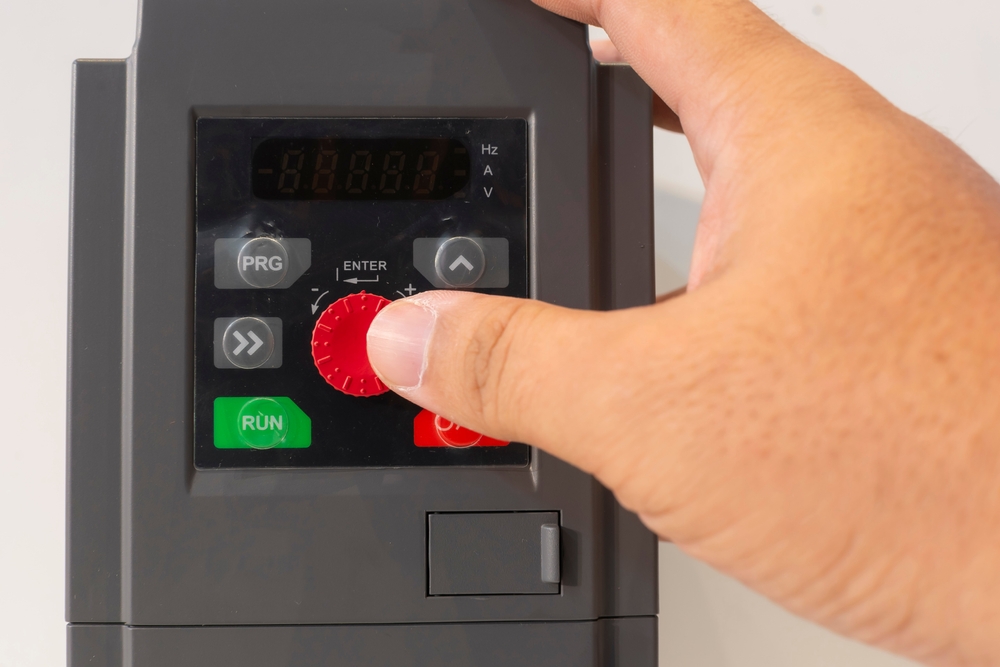Diagnosing and Resolving Erratic Drive Speed Fluctuations

What happens when your VFD drive can’t hold its speed? Erratic fluctuations can cripple productivity, drain energy, and wear down equipment fast. Sometimes, it’s a sudden surge; other times, a sluggish crawl or endless oscillation as the motor chases a setpoint it can’t reach. These issues aren’t just disruptive — they’re costly, and they often signal deeper problems waiting to surface. Here’s how to diagnose what’s happening, and the steps you should take to fix it.
Spot the symptoms and trace them to the source
Erratic speeds often give small clues as to the true nature of the underlying problem. The drive might deliver inconsistent torque or produce unusual noise from the motor. Operators might notice random bursts or dips in speed, even though no one changed the setpoint. Paying attention to these signs prevents bigger troubles down the road.
Remember: drives don’t misbehave for no reason. There’s always a catalyst behind sudden or ongoing speed changes:
- Inaccurate parameter settings: If the drive’s tuning parameters — like acceleration, deceleration, or torque limits — aren’t matched to the motor and load, overshoot or hunting becomes likely.
- Mechanical issues: Loose couplings or worn belts can create slack, causing speed changes the drive can’t correct. Gears or bearings with excessive play can also generate fluctuations.
- Feedback sensor faults: An encoder or tachometer that’s misaligned, dirty, or damaged feeds bad data to the drive, leading to irregular control output.
- Unstable power supply: Voltage sags, surges, or intermittent power disrupt speed regulation. Drives rely on consistent voltage to maintain stable torque and speed.
- Overly aggressive PID loops: Over-tuned PID parameters make the drive chase setpoints too aggressively, overshooting or oscillating.
Diagnose with a structured approach
Good root cause analysis is the key to resolving VFD speed fluctuations before they take their toll on other components. Don’t just change random settings and hope for the best. Take a methodical path to find the real culprit:
- Check mechanical integrity: Inspect motor mounts, couplings, and belts for looseness or wear. A wobbly coupling can mimic an electrical fault.
- Verify feedback devices: Clean or realign encoders. Replace damaged wiring or connectors. If the feedback sensor malfunctions, the drive can’t lock in stable speed.
- Review parameter settings: Confirm motor nameplate values in the drive. Look at acceleration and deceleration times. Review torque or PID settings.
- Examine power quality: Use a meter or power quality analyzer to spot voltage drops or spikes. Weak or inconsistent power leads to speed dips or surges.
- Use drive diagnostics: Many drives log faults or trend data that reveals patterns in speed or current. Check the drive’s built-in tools before replacing hardware.

Fine-tune parameters for stability
Once you find the issue, it’s time to dial in the correct settings. This might involve adjusting your VFD parameters — or making broader changes. Some of the most common actions include:
- Balance the drive: Slow it down if the motor overshoots or speed it up if it lags under load.
- Adjust PID loops: Lower an overaggressive proportional gain or raise the derivative term to damp oscillations.
- Refine torque limits: Ensure the motor can handle the load without triggering overcurrent or stalling.
Some drives serve processes with variable loads that shift frequently — like conveyors handling random weights. Others face abrupt surges, like pumps handling fluid slugs. Each application can demand its own specialized tuning approach. When the load changes significantly, recheck torque requirements or consider auto-tuning features that let the drive adapt on the fly.
Get expert VFD service
If you’re not sure how to proceed with safe VFD troubleshooting, GES can help. Now through the end of March, we’re offering 10% OFF single repairs and 15% OFF 3+ repairs on Siemens products, including VFDs.
Seek expert VFD solutions
Sometimes the answer goes beyond a parameter tweak. Drive controllers or feedback devices may be failing, or mechanical parts could require repair. If persistent speed fluctuations remain despite thorough checks, consulting with GES to ensure your components get the critical service they deserve.
